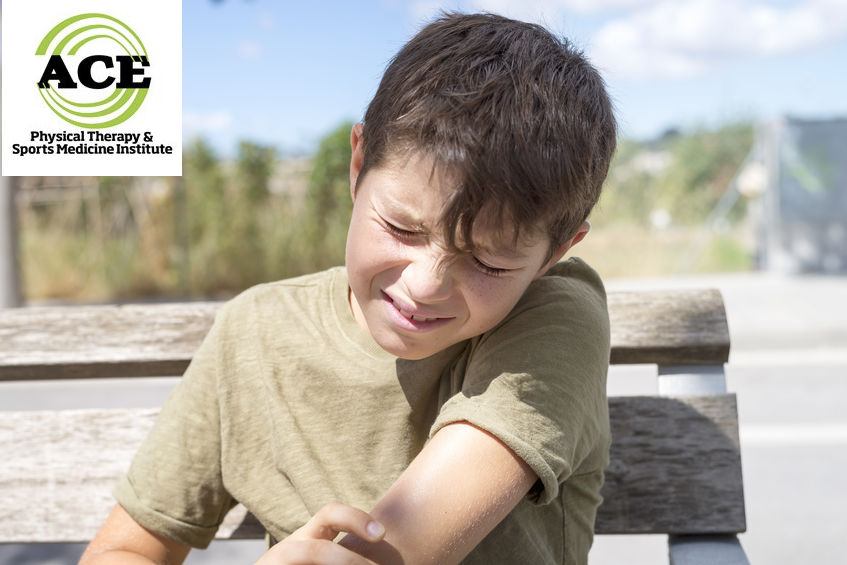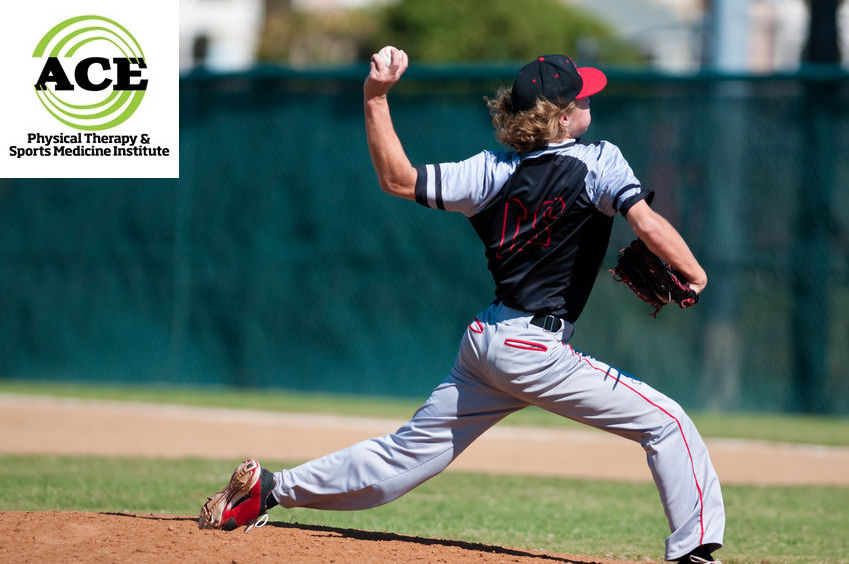MEDIAL ELBOW PAIN DUE TO LIGAMENT DAMAGE

Tid Bits of Info
- The most common UCL injuries occur in baseball pitchers.
- The rise in frequency of UCL injuries has been staggering in the past 15 years.
- Overhand throwing puts the UCL under a great deal of stress and can lead to damage.
- Young athletes are usually treated conservatively but older athletes require surgery quite frequently.
- Seek the advice of a Physical Therapist if you develop medial elbow pain.
New techniques and training have made it possible for overhanded pitchers to increase the intensity of their pitches. At the same time, there have been an increase in the number of ulnar collateral ligament (UCL) injuries among athletes who throw overhanded. The elbow joint is under a lot of stress and strain when someone participates in a sport that requires the overhead throwing motion. Young athletes should not experience pain when throwing, and this could be a sign that a problem is developing. Over time, the stress and strain on the medial joint are great enough to damage the UCL that provides the main stability to that aspect of the joint. When this ligament is damaged, it can often be career ending.
The UCL is the primary static stabilizing structure of the medial elbow joint. There is dynamic muscle support from the pronator muscles of the forearm. When someone throws an object with an “over-hand” or above shoulder level release their elbow is placed in a valgus position that can be severe enough to cause damage to it. The UCL can be dissected into 3 different parts, anterior, posterior and lateral bundles. The anterior and posterior bundles can be damaged during the throwing motion due to the tension that develops within the ligament throughout the throwing motion. The anterior bundle is tightest when the elbow is flexed less than 90 degrees and the posterior bundle when elbow flexion is greater than 90 degrees. The anatomy of the ligament jeopardizes the integrity of the anterior bundle more frequently during the throwing motion.
The elbow is subjected to the valgus stress during the throwing motion in all ages. Younger throwing athletes tend to have less severe injuries to the UCL and are treated conservatively with rest, ice and gentle exercise. In a study that was conducted over a 16-year period, nearly 140 patients were evaluated with the main complaint of medial elbow pain when they threw an object with the “over-hand” motion. Of these subjects, the mean age was 16.7 years old. The increase in the frequency of these injuries has been significant in the past 15 years. There reasoning behind the increase is unclear. It could be simply that healthcare professionals are more aware of these injuries, but it is probably related to a change in training and throwing techniques that can lead to an increase in valgus positioning of the elbow during the throwing motion. It is relatively clear that the older athletes have more severe involvement and this is most likely due to the increase in force and volume of throws that leads to UCL damage.
Conservative treatment of UCL injuries has been successful providing there is not extensive damage to both bundles. In the event that both anterior and posterior bundles are damaged, surgical intervention is usually needed to restore the static stabilizing capabilities of the UCL.

Physical Therapists that specialize in sports rehabilitation are some of the best healthcare professionals to treat an injured elbow patient. They can perform a variety of treatments that will help to reduce pain and swelling and restore motion in the injured elbow. The ligament heals slowly and needs several months to complete the healing process, but stretching and progressive strengthening exercises can be performed to promote proper alignment of new tissue cells. As the ligament heals, the goal of the rehabilitation changes to strengthening the core and upper extremities. Prior to returning to full competition, the injured athlete should participate and complete a full body routine that will prepare them for the sport that they are attempting to play.
UCL strains have become commonplace in today’s sports and the reasons for this occurrence are not totally clear, but one theory revolves around the simple fact that today’s athletes are trained better. The new techniques, diet, and throwing techniques enable the athlete to throw harder and further but this puts a great deal more valgus stress on the ligament.
























